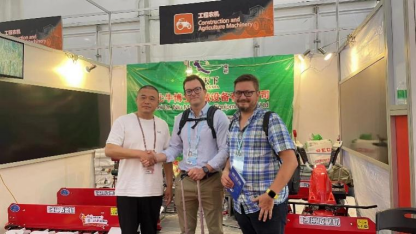Compact and Efficient Equipment for Small Scale Hay and Grass Collection
The Benefits of Small Windrowers in Modern Agriculture
In the ever-evolving farming landscape, efficient machinery plays a pivotal role in enhancing productivity and maximizing yield. One such innovation that has gained popularity in recent years is the small windrower. Designed to streamline the hay and forage harvesting process, small windrowers are transforming how farmers approach these tasks, offering numerous advantages over traditional methods.
Understanding Small Windrowers
Small windrowers are specialized agricultural machines that gather cut grass, hay, or other forage crops into neat rows, known as windrows, for easier drying and collection. Unlike their larger counterparts, small windrowers are compact and user-friendly, making them ideal for small to medium-sized farms. Their design is tailored to work efficiently in tight spaces and on uneven terrain, enabling farmers to maximize their operational efficiency without sacrificing quality.
Enhancing Efficiency
One of the most significant benefits of small windrowers is their ability to enhance harvesting efficiency. Traditional methods often involve manual labor or larger machines that might not be suitable for small fields. Small windrowers, however, can navigate easily between rows, minimizing the time and effort required to gather crops. This not only speeds up the harvesting process but also ensures that more forage is collected, reducing waste and increasing overall yield.
Moreover, the ability to create uniform windrows allows for more efficient drying. When crops are laid out in consistent rows, they receive better airflow and sunlight exposure, resulting in faster and more even drying. This is particularly important in hay production, where moisture content is crucial for quality. Farmers can thus improve their silage and hay quality while reducing the risk of spoilage.
Cost-Effectiveness
Investment in agricultural machinery is a critical decision for farmers, often hinging on cost-benefit analyses. Small windrowers are generally more affordable than larger models, making them accessible for small to medium operations. Their lower price point does not compromise durability or performance, allowing farmers to achieve significant savings without sacrificing quality.
small windrower

In addition to the upfront costs, small windrowers are often more fuel-efficient than their larger counterparts. As farmers are increasingly mindful of operating costs, the reduction in fuel consumption translates to greater profitability. Maintaining smaller machinery can also be less expensive, as they typically require fewer repairs and can be serviced easily.
Versatility and Adaptability
Small windrowers are versatile machines capable of handling various types of forage crops, including grass, clover, and alfalfa. Their adjustable settings allow farmers to tailor the machinery for different harvesting conditions and crop types, providing enhanced adaptability to changing agricultural needs.
Furthermore, the compact size of these windrowers allows for easy transport and storage. Farmers are able to move them between different fields or farms without incurring significant logistical challenges. This adaptability ensures that producers can respond quickly to market demands and optimize their operations based on current weather conditions or crop cycles.
Sustainability Considerations
With increasing attention on sustainable farming practices, the small windrower emerges as a tool that aligns well with eco-friendly objectives. By reducing the need for chemical preservatives used in drying processes and promoting better crop management, these machines can enhance the sustainability of forage production. Moreover, their fuel efficiency contributes to lower greenhouse gas emissions, supporting farmers' efforts to mitigate their environmental impact.
Conclusion
In conclusion, small windrowers offer a multitude of advantages to modern agriculture, particularly for small to medium-sized farms. Their efficiency, cost-effectiveness, versatility, and sustainability make them an essential addition to the harvesting toolkit. As the agricultural sector continues to innovate, small windrowers stand out as an example of how technology can support farmers in producing high-quality forage while maintaining economic viability and environmental consciousness. Embracing such advancements will undoubtedly play a significant role in shaping the future of farming.
Latest news
-
When to Upgrade Your Old Forage HarvesterNewsJun.05,2025
-
One Forage Harvester for All Your NeedsNewsJun.05,2025
-
Mastering the Grass Reaper MachineNewsJun.05,2025
-
How Small Farms Make Full Use of Wheat ReaperNewsJun.05,2025
-
Harvesting Wheat the Easy Way: Use a Mini Tractor ReaperNewsJun.05,2025
-
Growing Demand for the Mini Tractor Reaper in AsiaNewsJun.05,2025







